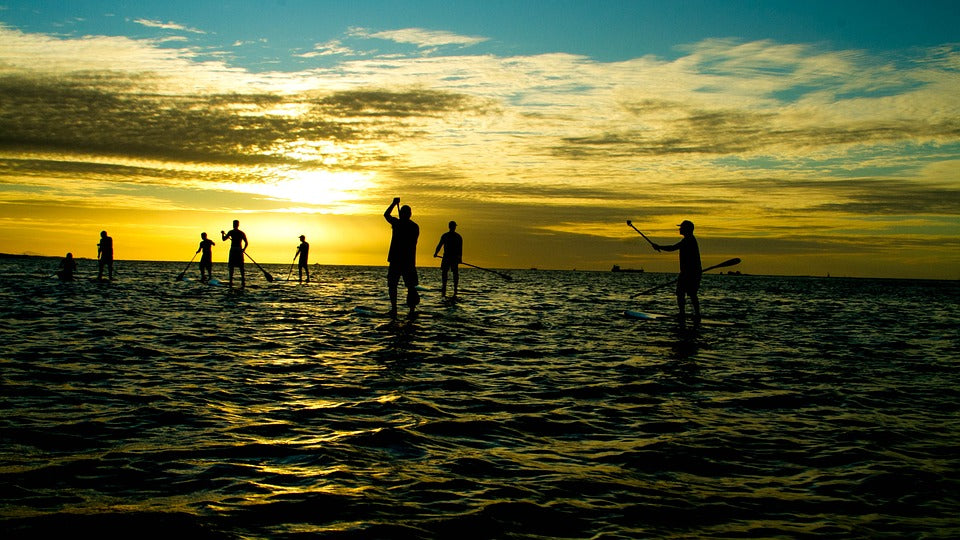Stand-up paddling is a great sport for people of all ages and abilities. It's low-impact, easy to learn, and can be done virtually anywhere you can find water. We love it because of its versatility ... but that can also create some confusion for those looking to break into the sport.
How? Well, that versatility comes with an array of options as far as board type, size, and length. So how do you know which one is right for you?

First, think about where you plan to use the board.
Easy access to a small lake will require different equipment than whitewater boarding. Racing options aren't the greatest for those who want to focus on SUP yoga or fishing.
Second, think about who will use it.
Children often do better on shorter boards and weight limits can influence the type and size of board needed for adults.
Third, consider how you plan to move it.
If you do a lot of adventuring all across the country and plan to take your SUP along, an inflatable board is the way to go. The same goes for those who plan to take it on hiking/camping trips. If you plan to only visit areas where you can drive directly to the water (a boat launch), a solid SUP may be the better option, but keep in mind that solid SUPs are obviously heavier and may be difficult for some people to carry/move by themselves.
And fourth, decide which is more important - maneuverability or speed.
Why? Planing hulls (those that remain flat along the surface of the water with a rounded nose) are more maneuverable than displacement hulls (those that "cut" through the water with a nose like that of a canoe and tend to sit lower in the water). This goes along with the first question - where do you plan to use it - and adds the layer of how do you plan to use it. Planing hulls are great for surfing, yoga, and whitewater as well as leisurely rides across the water. Displacement hulls are for those looking for speed for racing, touring, or fitness paddling.

Now that you've thought about the when, where, and how you plan to use your SUP, let's consider the different board options available. Some of these options may vary by company/brand, so be sure to read the specifics associated with all of the boards you are considering before you make a purchase. Be sure to check out volume, length, weight limits, thickness, and width.
In general, planing boards are more forgiving when it comes to these measurements. Displacement boards require a bit more thought. Pay special attention to the volume and weight statistics. If you are too light for the board, it won't sink into the water enough and will be difficult to control. If you are too heavy, it will sink too deep and will drag and be far slower than it should be. And remember to consider the weight of any gear you bring as this will have a significant influence on the performance of the board.

Surf
Surf SUPs are generally shorter than 10 feet long and are almost always planing hulls. They cut over the surface of the water with ease and allow for great maneuverability. The downside? They are slower on flat water and are less stable.

All-Around
These boards, as the name suggests, can be used for just about any type of SUPing. These are perfect beginner boards and are excellent options for those sharing the board with friends and family (who will differ in size and skill level). Though they work in just about any situation, they don't excel as much as the others for specific objectives (they aren't as fast as racing/touring boards or as maneuverable as surf SUPs). They generally range from 10 to 12 feet in length and usually have planing hulls though some companies offer displacement style all-around boards.

Flatwater
These boards are designed for distance and speed. Most are over 12 feet long and are still wide enough to be relatively stable in most conditions. They will typically have a displacement hull, which allows for better tracking (staying straight on the water) and speed.

Racing
Racing SUPs are a sub-category of the flatwater boards. They are generally the same length and always have displacement hulls. The major difference is in the width. Racing boards are narrow, which means they are far less stable than any other board and aren't a great choice for beginners. The narrowness allows for increased speeds, which is why this choice is great for those looking to race.



